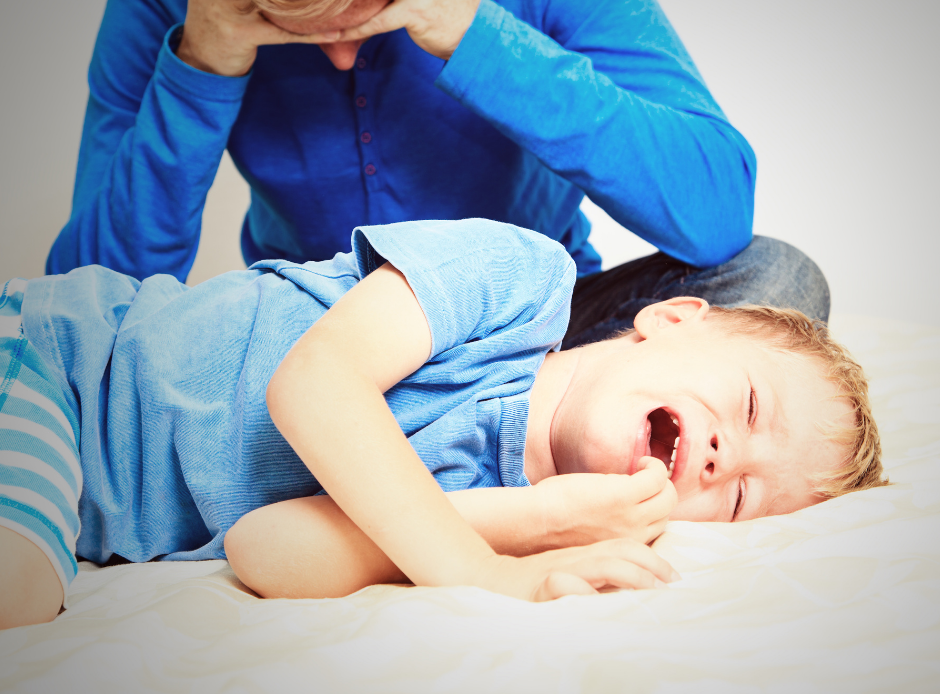
.All parents know the feeling of hearing their baby cry for the first time. It’s a mixture of overwhelming love and Protect-My-Baby-At-All-Costs adrenaline. But sometimes, even after that newborn phase fades, you may still hear your child cry — this time, fake crying. So why do kids fake cry? And more importantly, how can you respond effectively? Read on to find out.
Let’s understand “fake cry” and why kids do it
“Fake crying” is defined as crying that is not motivated by vital needs, such as food, sleep, and parents’ attention to pain or emotional issues, such as fear.
As babies, children cry to have their needs met because they don’t have any other way of communicating. They soon learn that crying gets the job done. As kids grow, language develops, and crying becomes less efficient (it is much easier to tell the parents what they want than cry and wait for the parents to guess). However, when talking doesn’t deliver what they want, such as a toy at the supermarket or a cookie when it is bedtime, kids can revert to their primal way of communication (cry or, in this case, fake cry).
Although your child’s tears are fake, the feelings that underlie these fake tears are real. Your child wants or needs the comfort that would come with real crying. He is doing something brilliant and adaptive: trying to act in a way that generally leads to comfort.
How to tell if your child is fake crying?
While you might think that fake crying is a sign that your child is becoming manipulative, it’s actually quite the opposite. Fake crying generally occurs because kids find themselves in situations where they feel frustrated and their natural reaction is to cry.
Fake crying is sometimes hard to distinguish from real crying, but some signs include:
- Spitting rather than sobbing
- Coughing instead of choking up
- Some fake sobs are accompanied by fake tears, although this isn’t always the case.
- Making sounds at a high pitch.
- Fake crying is often accompanied by exaggerated facial expressions
- Excessive eye rubbing and wiping away tears on clothes rather than on hands and face.
Should you soothe and respond with empathy, as you would when a child is really crying?
When your child is “fake crying”, respond as though the tears are real. This does not mean that you give in to your child or give him the toy or food or whatever is desired. Instead, soothe your child and empathize, saying, “I see you’re upset.”
After your child is soothed, you can have an open, non-shaming discussion about how people generally react to fake crying on a different occasion. At this later stage, you can share how you feel when he fake cries and think of more effective ways to communicate his needs to you. For example, you might choose to role-play a few different options. This way, when the need to “fake cry” comes, he has a few strategies under his belt.
This conversation could start like this:
Parent: Do you remember earlier today when you were crying? Well, there are a few different ways of crying. Have you noticed that? When you cry the way you did this morning (describe the cry), it can make people feel annoyed, cranky or angry (explain how it makes you feel), and people are less likely to want to spend time with you. I want to be able to help you because I love you.
Do you think we can come up with a better plan for what to do when you are upset? For example, do you think you can ask for a hug instead, or cuddle time, or an extra kiss, or say “I’m upset?” What do you think? Do you have any other ideas?
Children fake cry for a variety of reasons, but one thing is clear — it’s not something to take lightly. If your child starts crying and you can tell they are faking it, don’t make the situation worse by yelling at them or punishing them as this will only teach them that their feelings don’t matter. Instead try being present and caring. And if all else fails? Just wait out the storm. Kids may be frustrating sometimes, but we promise there’s always a light at the end of this tunnel! We’re here to help with any parenting struggles you might face along the way – download our free Showing Assertiveness printable to teach your child effective ways of communicating.
Related Articles
How to help your child cope with anger




